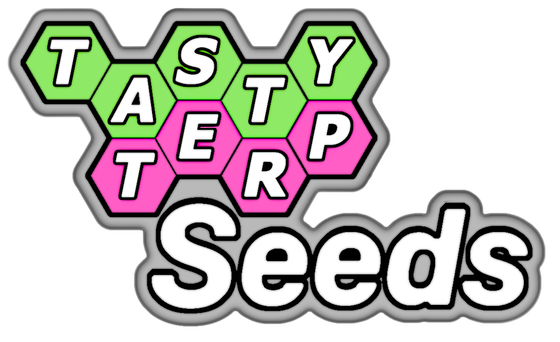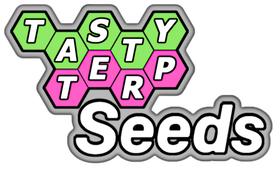Lit and Loaded: How LED Grow Lights are Revolutionizing the Cannabis Cultivation Game
In the world of cannabis cultivation, a quiet revolution is underway, altering the landscape of how this ancient plant is grown. At the heart of this transformation is the adoption of Light Emitting Diode (LED) technology, which promises to redefine cultivation practices, improve sustainability, and significantly enhance product quality. As the cannabis industry continues to grow, the shift towards LED lighting represents a significant leap forward in addressing both the environmental concerns and the increasing demand for premium quality cannabis.
A Brighter, Greener Future
Traditionally, cannabis cultivation has relied on high-intensity discharge (HID) lamps, which, while effective, are also known for their high energy consumption and heat generation. This not only contributes to a larger carbon footprint but also necessitates additional cooling systems, further increasing energy use and costs. LEDs, on the other hand, are celebrated for their efficiency, emitting less heat and significantly reducing the energy needed both for lighting and temperature control.
The impact of LED lighting on energy consumption is profound. Studies have shown that LEDs can use up to 40% less energy than HID lamps, a savings that not only benefits the planet but also the bottom line of cultivation operations. This efficiency comes without sacrificing quality; in fact, LEDs can be fine-tuned to emit specific light spectra, optimizing plant growth and cannabinoid production.
Enhancing Quality and Yields
Plants respond differently to various parts of the light spectrum. For example, blue light (400-500 nm) is generally associated with promoting vegetative growth, strengthening stems and leaves, while red light (600-700 nm) is more effective during the flowering stage, encouraging blooming and fruit production. Far-red light (700-800 nm) can accelerate flowering and alter plant height. The ability of LEDs to emit specific wavelengths allows growers to create custom light recipes that can manipulate plant traits, improve growth rates, and increase yields.
Tailored light spectra can significantly impact the production of secondary metabolites in plants, which include valuable compounds such as cannabinoids, terpenes, and flavonoids in cannabis. By adjusting the light spectrum, growers can influence the concentration and composition of these compounds, enhancing the plant's medicinal or recreational value. For example, a higher ratio of ultraviolet (UV) light can increase the production of THC and CBD, as well as terpenes, which contribute to the aroma and flavor of the cannabis.
The precision of tailored light spectra not only benefits plant growth and product quality but also contributes to energy efficiency and sustainability. By optimizing the light spectrum for the plants' needs, energy waste is minimized, as no unnecessary wavelengths are produced. This precision, combined with the inherent energy efficiency of LEDs, results in a lower carbon footprint for horticultural operations. Additionally, the reduced need for chemical inputs and the possibility of a more controlled growing environment contribute further to sustainability efforts.
The field of tailored light spectra for horticulture is still evolving, with ongoing research and development efforts aimed at understanding the optimal light recipes for various crops and cultivation goals. These efforts include not only academic and institutional research but also in-house development by LED manufacturers and large-scale cultivators. As the body of knowledge grows, the potential for further enhancing crop quality and yields through light manipulation expands.
While the potential of tailored light spectra in horticulture is immense, there are challenges to widespread adoption. The initial cost of high-quality LED lighting systems can be a barrier for some growers. Additionally, the complexity of designing effective light recipes requires a deep understanding of plant biology and light physics, necessitating education and experimentation.
Despite these challenges, the opportunities presented by tailored light spectra for enhancing crop production are driving rapid adoption and innovation in the field. As technology advances and costs continue to decrease, tailored light spectra are set to become a cornerstone of precision agriculture, offering a promising future for the cultivation of cannabis and other crops.
The Environmental Impact
The sustainability of LED lighting technology in cannabis cultivation represents a critical juncture in the agricultural sector's ongoing journey toward more eco-friendly practices. As the legal cannabis market continues to expand globally, the industry faces increased scrutiny regarding its environmental impact. Traditional cultivation methods, particularly those relying on high-intensity discharge (HID) lamps, are energy-intensive and contribute significantly to the carbon footprint of indoor growing operations. LED lighting technology emerges as a beacon of sustainability, offering several key benefits that not only reduce the environmental impact of cannabis cultivation but also align with broader goals of conservation and responsible resource management.
LEDs are fundamentally more energy-efficient than traditional lighting solutions used in agriculture. They convert a higher percentage of electrical energy into usable light, with significantly less wasted as heat. This efficiency translates directly into lower energy consumption for the same level of light output, reducing the greenhouse gas emissions associated with electricity production, especially in regions where fossil fuels dominate the energy mix. The adoption of LED lighting in cannabis cultivation can substantially decrease the overall energy demand of the industry.
The lower heat output of LEDs compared to HID lamps significantly impacts the sustainability of indoor cannabis cultivation. Traditional HID lighting systems generate a considerable amount of heat, necessitating the use of extensive ventilation and air conditioning systems to maintain optimal growing temperatures. These systems further increase energy consumption and operational costs. LEDs, emitting much less heat, reduce the need for such cooling systems, thereby lowering the energy footprint of cultivation facilities.
LEDs have a markedly longer lifespan than traditional lighting systems. While HID lamps may require replacement after 10,000 to 20,000 hours (about 2 and a half years) of use, LEDs can last for 50,000 to 100,000 hours (about 11 and a half years). This longevity reduces the frequency of replacements, cutting down on the manufacturing, shipping, and disposal impacts associated with new lights. A longer lifespan also means less waste entering landfills, a significant step towards sustainable cultivation practices.
The ability to tailor the light spectrum of LEDs for specific growth stages of the cannabis plant allows for more precise cultivation methods. This precision can lead to not only improved yield and quality but also more efficient use of resources. For example, optimizing light spectra can enhance photosynthesis efficiency, reduce water consumption, and decrease the need for chemical fertilizers and pesticides by promoting healthier plant growth. These factors contribute to a more sustainable cultivation process, minimizing the environmental footprint of each crop.
The transition to LED lighting in cannabis cultivation is part of a broader movement towards sustainable agriculture. As technology continues to improve and costs decrease, the potential for LEDs to contribute to environmentally responsible cultivation practices becomes even more significant. However, realizing the full sustainability benefits of LED technology also requires growers to adopt holistic approaches to sustainability, including water conservation, organic growing practices, and renewable energy sources.
LED lighting technology stands at the forefront of sustainable cannabis cultivation. Its benefits extend beyond energy efficiency and reduced heat output to include longer lifespans and the potential for resource conservation through precision agriculture. As the industry continues to grow, the adoption of LED lighting and other sustainable practices will be crucial in mitigating its environmental impact, paving the way for a greener, more sustainable future in cannabis cultivation.
The Future of Cannabis Cultivation
The ongoing evolution of LED technology, coupled with its decreasing cost, suggests that its adoption in cannabis cultivation will continue to grow. As research into light spectra and plant responses deepens, the potential for further advancements in crop yield, potency, and quality is vast. Moreover, as the industry evolves, the regulatory landscape may increasingly favor environmentally friendly practices, making LED lighting not just an option but a necessity for competitive and sustainable cannabis cultivation.
The revolution in green is well underway, and LED lighting is at its forefront, illuminating the path toward a more efficient, sustainable, and high-quality future of cannabis cultivation. As this technology continues to evolve, its impact on the industry will undoubtedly continue to grow, marking a new era in how we grow, understand, and utilize this versatile plant.



Leave a comment